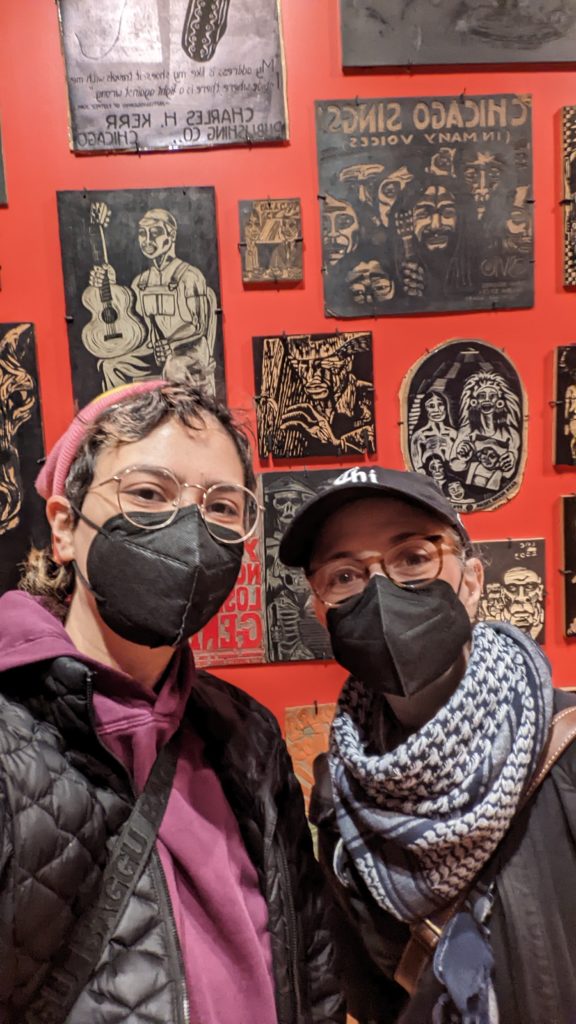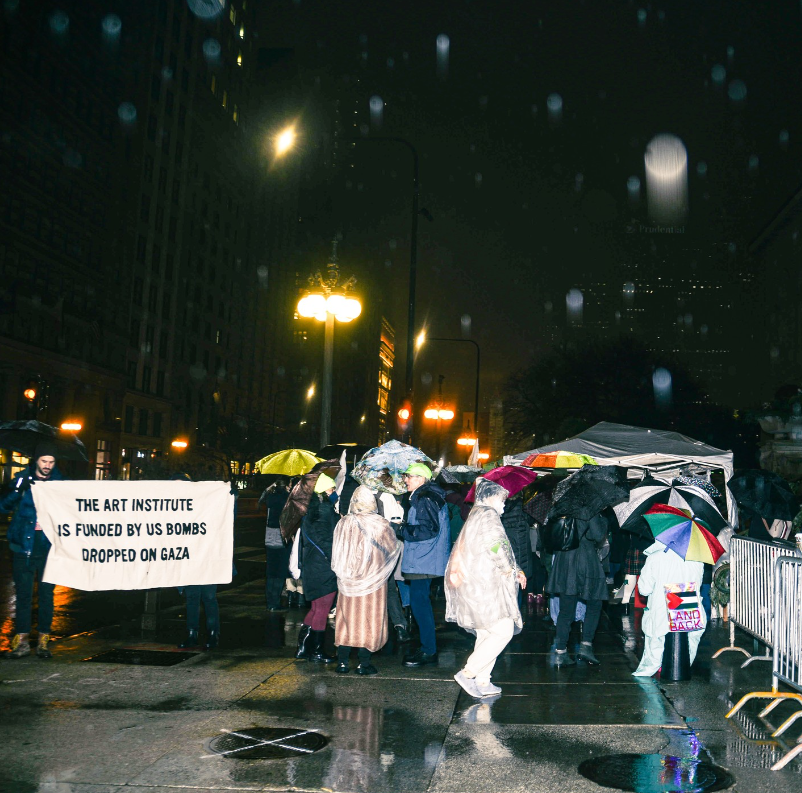This post was written by Local 1215 member Diana Rocha.
Where would labor unions be without protest? Without protest art? Without printmaking?
In a profession surrounded by printed pages, I take them for granted. I don’t often think about the magnificent miracle that is printing – the ability to duplicate and disseminate a message, a story, a call for a better tomorrow. When I’m hit with a wall of printing blocks carved with images and messages calling for a general strike, and depicting figures from labor history, I ponder the questions: where would we be without protest? Without protest art? Without printmaking?
On November 18, AFSCME Local 1215 members visited the Carlos Cortéz 100 AÑOS exhibition at the National Museum of Mexican Art in Pilsen. A longtime Wobbly (member of the Industrial Workers of the World) raised by activists, it’s no surprise Cortéz’s art centers everyday workers, uplifts movement struggles, and depicts historic labor figures such as Lucy Parsons and Eugene V. Debs. Among the messages on Cortéz’s blocks, including protest posters, were “¡Nuestra lucha es tuya! / Our struggle is yours!” and “It’s all ours – with the General Strike.” The messages by other local artists shown in the exhibition included: “No somos ilegales. De la tierra somos. / We are not illegal. We are of/belong to the earth.” The unifying message? Global solidarity.

After our museum visit, we ate lunch at 5 Rabanitos, and talked about the art we saw and the labor movement today, along with the goings-on of our Local. We talked about how we might incorporate artmaking into our practice, the revolutionary power of zines and print materials for education, and the importance of messaging in advancing the causes of the working class and our world as a whole. We talked about the role of unions in collective liberation.
The night before this visit, members of our local engaged in discussion and voted to sign on to a UE letter calling for a Ceasefire in Gaza, signed by various unions in the U.S. We talked about this, too. At that time, over 10,000 Palestinians had been killed in attacks by Israel since October 7. In the time since this museum visit, union members across the country and alongside other organizations, including thousands in New York, have moved together to demand a Ceasefire in Gaza.
In Chicago, a collective of library, museum, and archives workers, along with artists, writers, and art educators (including some AFSCME 1215 members) have organized behind the banner Cultural Workers for Palestine (@culturalworkers4palichi). Workers of various industries in Chicago have organized vigils to mourn the lives of Palestinian workers killed by Israel nearly every week since December 1, understanding, just as Carlos Cortéz understood, that it is on workers of the world to recognize and uplift each other, and to demand change in favor of everyday people. There is an understanding among cultural workers that cultural institutions, historical materials, and art are pivotal to telling our stories and preserving our own human histories, including labor history, and that destruction of these is an act of erasure – an extreme relative of book bans.
As Cortéz protested outside of the Art Institute of Chicago in 1983 with a banner reading “If, as artists, we silently witness the destruction of other cultures, we forfeit the right to make art of our own,” cultural workers held a vigil outside the Art Institute of Chicago on December 22, 2023, mourning the lives of Palestinian artists and writers killed in attacks by Israel, and the destruction of cultural institutions and records in the region. One banner at the vigil read, “The Art Institute is funded by US bombs dropped on Gaza,” referring to one of the major donors to the Art Institute of Chicago, the Crown family, who have made much of their wealth from General Dynamics, the third largest recipient of Department of Defense contracts in the U.S., and long-time supplier of weapons to the Israeli Defense Forces (IDF).

Since the museum visit, the number of Palestinians killed in attacks by Israel has risen to at least 23,357, including at least 9,500 children. I write this now to give context to both the museum visit as well as the time in which this post was written. It would be inauthentic to write about a visit to see protest art, preserved by a cultural institution, demonstrating messages of global struggle, without talking about the present-day resistance for the liberation of Palestine, working class solidarity, and how workers around the world are taking their place in the movement.
Another union field trip to see this exhibition is planned for Sunday January 21, 2024 at 11 a.m. The exhibition runs through February 18.
